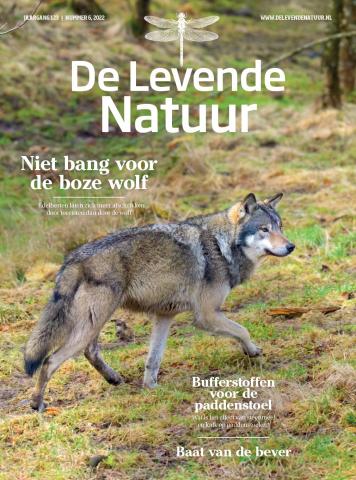De Levende Natuur nummer 6 van 2022 (English summary)
Afbeelding

Nitrogen alters food quality of plants
The effects of increased nitrogen deposition and accompanying acidification to plant food quality, and subsequently on animal populations, are still poorly known and there is a growing need of sound working hypotheses based on existing knowledge. Nitrogen enrichment and acidification lead to reduced plant tissue elemental content and changed nutrient ratios (C:N, N:P, and other elements). Furthermore, content and composition of amino acids and essential vitamins, as well as change markedly. N-based toxins and antifeedants tend to increase, while C-based compounds tend to decrease. The response of animals to these changes in food quality depend on species specific optimum intake ratios, determined by the life history strategy. It is hypothesized that fast-growing species that are specialized on a single plant species of oligotrophic environments are most likely to respond negatively to N deposition induced changed food quality. Specialist species adapted to eutrophic environments are expected to respond positively. Generalist species are expected to show less strong or mixed responses to changed food quality, dependent on their specific essential nutrient requirements and tolerance to plant toxins.
Effects on mushrooms of measures against acidification
Addition of lime and silicate minerals (rock powder) are tested as a measure against soil acidification in forests and heathlands on sandy soils. In this article the effects on mushrooms are presented. Within 5 years, the addition does not lead to the return of species that have declined due to acidification or eutrophication. However, the sharp increase of carpophores from large saprophytes indicates a stimulation of decomposition. Also, more species indicating less acid conditions are found. A partial recovery of the original species composition might be achieved by combining rock powder addition with other measures, but a significant recovery requires a strong reduction of the atmospheric nitrogen deposition.
Beavers: rather regulate than combat
After introduction in The Netherlands in 1988, the number of beavers has increased substantially along the various waterways. And with them, potential conflicts as well. Beavers have dug into dikes and other protective structures, they may obstruct smaller waterways, and damage trees while looking for food and building material. With prevention being cheaper and often easier than solving problems when beavers have dug in dikes, we describe easy measures to avoid beavers from settling. Obstruction of waterways may be encountered by installing beaver deceivers under dams. Beavers may also become allies, when they are lured to build dams in areas where water needs to be retained.

